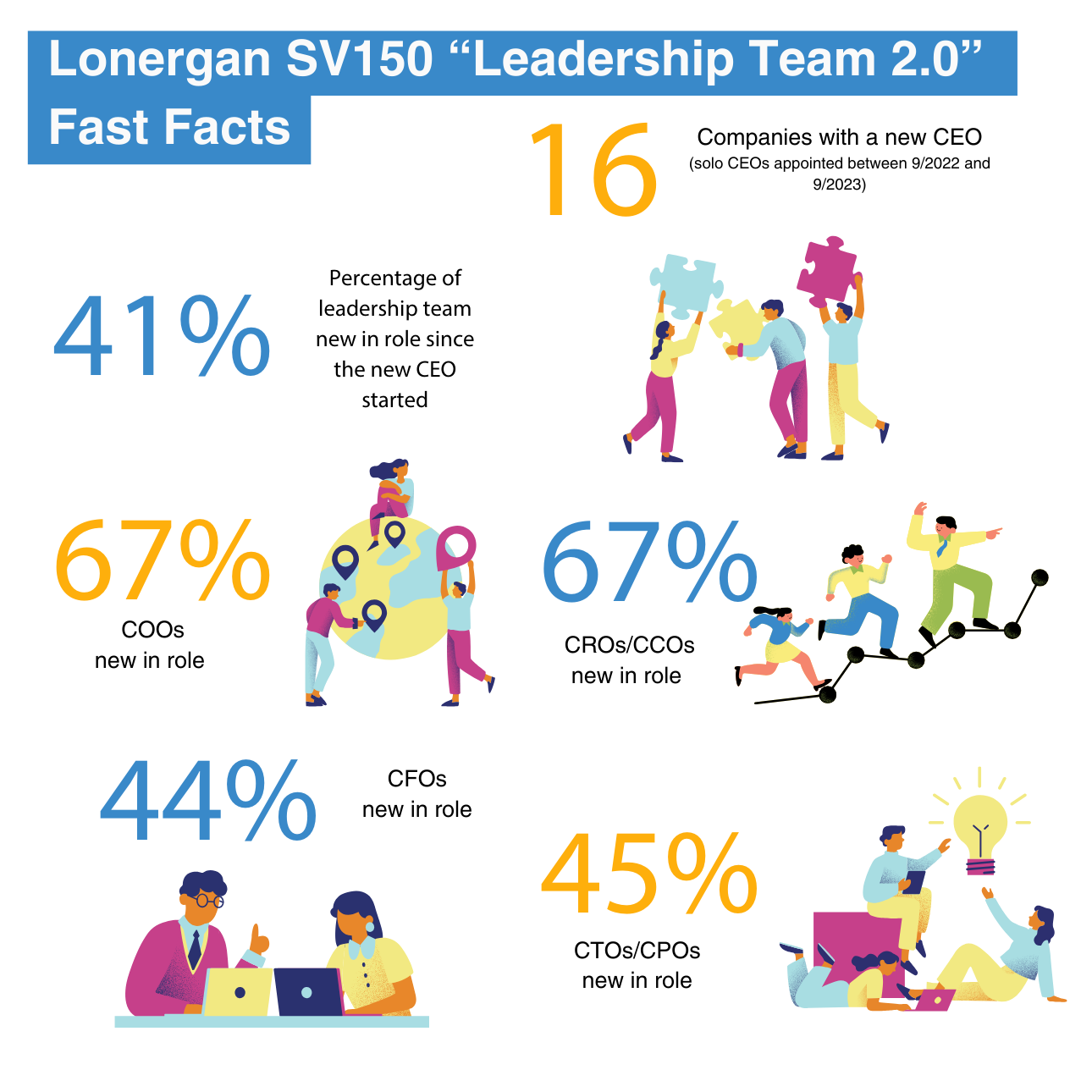In August, we reported on a surge in CEO turnover in the ranks of the Lonergan SV150. Like cascades from a winter snowmelt, leadership changes have continued downstream.
We looked at sixteen companies from our August report with new CEOs appointed from September 2022 to September 2023, and found a jaw-dropping 41% of senior leadership at these companies are new in their roles since the new CEO started. If we include the new CEO in this percentage as well, this rate increases to 48% of the leadership team is new in role.
Is this higher than normal? Clearly yes - we found published rates of public company officer annual turnover in the S&P 500 have generally been no higher than 18%, including both voluntary and involuntary turnover. To check to see if this published statistic looked meaningful for our companies, we looked a "control" group of eight other LSV150 companies across the revenue spectrum and chosen to be in industries similar to those with the new CEOs. We found that the control group companies saw 18% of leaders were new in their roles in 2023, which matches expectations of 'normal' turnover seen in the S&P 500.

Which roles were most likely to have new incumbents? There were seven new CFOs in this group of 16 companies, for a replacement rate of 44%. There were 4 new Chief Operating Officers out of total of 6 people in that role (67% new), since not all companies profiled someone with that title on their website.
The Infographic below summarizes our key findings by role:

Notes on methodology: senior leadership was defined as those executives profiled on the company website — consulted in the final week of January 2024. The number of executives shown on the websites varied widely from 3 (at the smallest two company teams shown) to 14 — the median number of executives shown was 9. All companies displayed the role of CEO and CFO. Not all other roles were utilized/reported on the website (for example, CTOs were at 12 of 16 companies; CPOs at 10; CROs at 5; CCOs at 4; COOs were present at only 6).
Companies in the August CEO Transition Report which qualified for this study were excluded from the data if they had appointed a co-CEO to join a longer serving incumbent, or had ceased doing business.